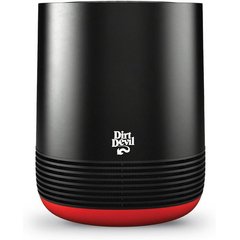Rabbit Cage Guide
Rabbits are active, intelligent, and social animals. They require a suitable living environment, a healthy diet, fresh water, social interactions, and the ability to behave like a rabbit. Rabbits need appropriate space to perform their normal behaviors—rabbits should be able to run, hop, stand on their hind legs, dig, and always stretch out fully in their environment. When rabbits are not provided the appropriate setting, they can develop medical conditions like obesity, foot sores, gastrointestinal issues, and behavioral problems.
Rabbit Cage Specifications
Your rabbit should have a main shelter where they can rest, go to the bathroom, eat, drink, and hide if needed. They should also have an exercise area where they can play for a minimum of 4 hours per day; ideally, it should be permanently always attached to their main enclosure and open to them.
Generally, a good rule of thumb is to provide a main enclosure that is at least four times the size of your rabbit. The larger, the better! Rabbits should be able to hop around, stand on their hind legs without touching the top, and lay down easily. There also should be enough room for a litter box, water bowl or bottle, hide box, and an area for pellets and hay.
For small to medium rabbits like a Dwarf or Dutch rabbit, the enclosure should be at least 24 inches wide by 24 inches high by 36 inches long. For larger breeds like the Flemish Giant, the enclosure should be at least 36 inches wide by 36 inches tall and up to 120 inches long. If you have multiple rabbits, double the cage size per rabbit.
Recommended Products
Cage Materials
Wire-sided cages are best for ventilation, cleaning, and preventing your rabbit from escaping. The floor should be solid like plastic to avoid pressure sores and allow easy cleanup. Wood cages are tough to disinfect and not ideal for your rabbit. The enclosure should not be in a drafty, damp area like a basement, not in direct sunlight, have adequate ventilation, and be in an area of the home where you spend a lot of time. Rabbits are social animals and require daily interaction with people or other rabbits.
Exercise Area
Provide your rabbit with an exercise area of about 24 square feet. If needed, you can use baby gates or make a pen to contain that area. The height of the gates should be about 3-4 feet tall. If you do not have a thick carpet, provide thick yoga mats or carpet pieces in their exercise area to prevent foot sores. Rabbits should be able to run around this area for at least 4 hours each day, but if you can give your rabbit access to this area 24/7, that is ideal.
An excellent example of a properly sized rabbit cage is the Frisco Wire Small Pet House Shaped Cage. Place the pan on top of the wire bottom, not underneath, to prevent foot sores. Alternatively, you can put a mat to cover the wires as well. Do not attach wheels to your rabbit’s cage because it could be dangerous if it moves around.
Indoor Rabbit Hutch vs. Outdoor Rabbit Hutch
Indoor housing is recommended for all rabbits because of environmental and health concerns with outdoor hutches. In addition, the temperature should remain ideally around 60-75 degrees Fahrenheit because rabbits do not have sweat glands and can overheat easily.
If you choose to house your rabbit outside, please provide them with a shelter protected from the heat and cold. It is ideal to place outdoor hutches on the side of the house in the shade, not facing the morning or afternoon sun.
Hutches should be several feet off the ground. Ensure the cage is protected from outdoor predators like coyotes and raccoons by putting a fence around the hutch. In the winter, provide a lot of straw bedding to keep them insulated and change the water daily. If the temperature falls below 40 F or reaches above 75 F, please bring your rabbit indoors.
Rabbit hutches should be one square foot for every pound of an adult rabbit weight. The hutch should be at least 20 inches high and higher for larger breed rabbits. Many hutches are made with 16-gauge wire for the sides and tops and 14-gauge wire for the floor. Cover the wire floor with 2-3 inches of paper bedding or hay.
The only part of the hutch that should be wood is the frame because rabbits will chew on wood. The wooden legs of the wood should be treated to prevent rot and termites. Please make sure the treatment you use is rabbit safe. The roof should be slanted, and the edge should extend 7 inches past the edge of the hutch for weatherproofing. It is not recommended to let your rabbit outdoors, but if you, please allow exercise for at least 4 hours. However, a rabbit should always be confined to a cage or hutch and should not be let outside.
What Does a Rabbit Need in Their Cage?
Provide 1-2 inches of high-quality paper-based bedding in their main enclosure. Other items needed are a litter box in the corner with paper-based products, a cardboard hide box, a hay rack, a water bottle, a small pellet dish, and toys.
In their exercise area, you can use baby gates or a pen about 3-4 feet high to prevent jumping over. If you do not have carpet, provide thick yoga mats and bits of carpet to prevent pressure sores on their feet. If you allow your rabbit free access to your home, please ensure that you are rabbit-proofing and keeping them safe from electrical wires, toxic plants, and chewing on the walls.
Rabbit Cage Cleaning
Cages and hutches should be cleaned thoroughly once a week. Every day, you should spot clean the litter box and bedding and remove any soiled material or uneaten food. When cleaning the food and water containers daily, use antibacterial dish soap like Dawn and ensure you clean up in the waterspout.
When your rabbit is not in the cage during the once-a-week cleaning, remove all bedding material, litter pan, food, and water containers. Throw away disposable bedding. Empty the litter pan and wipe down the cage as needed. You can use vinegar to clean up any hard-to-remove spots and then disinfect with a small animal habitat cleaner or 3% bleach solution. Leave the disinfectant for 10 minutes and then rinse thoroughly and dry completely before replacing the bedding.
In addition, you should provide lots of toys for mental stimulation and to prevent your rabbit from chewing on inappropriate items like furniture, walls, plants, and electric cords. Toy options include:
-
Rabbit-safe wooden sticks or blocks (untreated non-cedar wood)
-
Lots of hay to wear down their continuously growing teeth
-
Cardboard paper tubes
-
Hard plastic baby/cat/bird toys that they can throw and chase
-
Tunnels or castles with platforms made of nontoxic wood or cardboard
-
Digging boxes
You can make a digging box with a plastic tub or cardboard box and fill it with layers of carpet, hay, paper litter, or newspaper.
If you let your rabbit free roam your house, supervise them and rabbit-proof the electrical wires, toxic plants, and walls with baby gates or other barriers. Please also provide them with additional litter boxes and hide boxes as needed.
Do Rabbits Need a Litter Box in Their Cage?
Rabbits prefer to urinate and defecate in just a few places (typically corners) so it is ideal for putting a litter box in the corner of the cage to make for easy daily cleanup. You can put bedding inside the litter pan as well as a handful of hay since rabbits like to eat inside their litter box.
DIY Rabbit Cage
You can build a DIY rabbit cage, but it can be a lot of work, so it is often recommended for first-time rabbit owners to buy a pre-made cage. An easier option is to construct a large pen from 14”x14” wire storage cubes or modify a puppy wire playpen. It is important to put thick 1-2-inch carpet or thick yoga mats for their feet.
How to construct a DIY rabbit cage:
-
Start assembling the wire panels with the connectors and attach at least three panels across with 1-2 on top of those. Repeat this a total of four times to make a cube.
-
Reinforce the panels with zip ties. Make sure to cut off any excess material.
-
Make sure to leave one bottom panel as a permanent opening. If you want a door, only attach zip ties on one side so you can open and close it.
-
Place the yoga mats or carpet inside your rabbit pen, covering all available flooring.
-
Place a litter box in one corner; you can attach a hay rack and water sipper to the wire panels.
If you prefer to build a more elaborate hutch for your rabbit, you can obtain building plans for rabbit cages from state extension services or agricultural offices.
References
-
San Diego House Rabbit Society. General Rabbit Care Housing. 2020.
-
House Rabbit Society. Does my rabbit need a cage? 2022.
-
House Rabbit Society. House Rabbits 101. 2022.
-
Brown, Susan. Rabbit Care. Veterinary Partner. 2009.
-
RSPCA. Rabbit Housing. 2022.
-
RSPCA. Creating the Right Home for your Rabbit. 2022.
-
RSPCA. Keeping your Rabbit Happy. 2022.
-
Marinell Harriman. House Rabbit Handbook: How to Live with an Urban Rabbit. Drollery Press. 2013.
-
Harcourt-Brown, Frances. Textbook of Rabbit Medicine. United Kingdom, Butterworth-Heinemann, 2002.
-
Quesenberry, Katherine, and James W. Carpenter. Ferrets, Rabbits, and Rodents-E-Book: Clinical Medicine and Surgery. Elsevier Health Sciences, 2020.
-
Parker, Karen. The Rabbit Handbook. United States, Barron's Educational Series, 2000.
Featured Image: iStock.com/malerapaso




